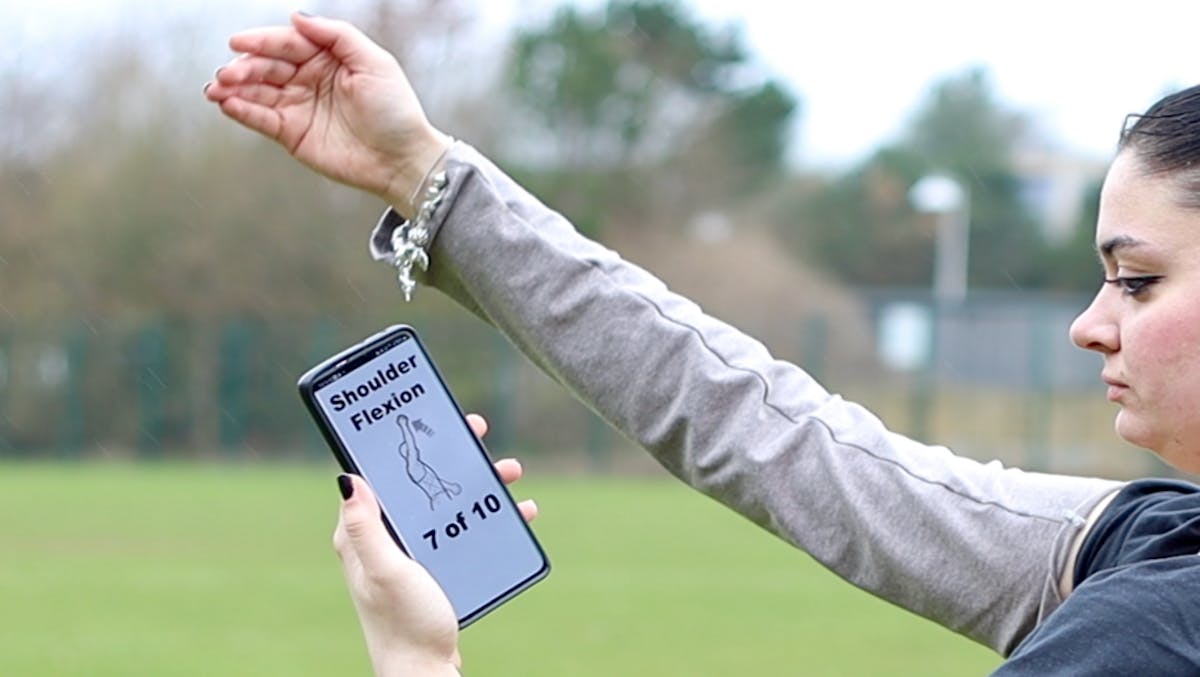What Have You Got Up Your Sleeve?
This interactive clothing can track arm motions, and by placing the functional components in the seams, it is also flexible and comfortable.

The number of mobile electronic devices we use on a daily basis is continuing to grow as the years go by. It is not uncommon that an individual will have a smartphone, smartwatch, fitness tracker, and even a wearable medical device with them at all times. Well, at all times they remember to lug them around, anyway. This trend toward us relying more and more on mobile devices in our daily lives is expected to grow in the future, and with it the burden of managing all of these gadgets will also grow.
One interesting idea that could alleviate many of these issues involves building electronic devices into clothing. In addition to making the use of these systems transparent, it would also be pretty hard to leave home without them. To date, however, interactive clothing designs have frequently been a bit stiff. Without the comfort and mechanical flexibility of normal clothing, these garments are not likely to become commonplace. And that seems to be playing out in the real world — when was the last time you saw an interactive shirt for sale at a retailer? Exactly.

Recent work completed by researchers at the University of Bath and the University of Bristol in the United Kingdom looks like a meaningful step forward for interactive clothing. Traditional solutions typically use e-textile fabrics to incorporate functional components into their design. The problem is that these specialized fabrics just do not behave like any standard fabrics that we are used to. To overcome this issue, the team instead focused on instrumenting only the seams of garments. The fabrics joined by these seams are just everyday fabric panels.
This unique design maintains the comfort and movement of traditional clothing, while still fitting in functional components. And since seams are naturally aligned with the body’s axes of motion, this technology is especially useful in sensing musculo-skeletal movements. Moreover, seam locations present an ideal solution for supplying power to the entire garment since they run for nearly its full length.
Given these properties, the researchers first built their system into a sleeve. This would have the obvious advantage of making it possible to detect motions of the arm. The sleeve is made of a traditional, non-functional fabric, but the seams are sewn with conductive threads. Being highly conductive, they can both deliver power and serve as conductive sensing channels.
Four designs were tested, each with different seam and sensing channel configurations. A cohort of participants was asked to perform twelve different arm movements while wearing the sleeves. Data from the sensors was analyzed by a Random Forest algorithm, and it was found that the individuals’ arm movements could be detected correctly in 84 percent of cases when wearing the best performing sleeve design.
This system is limited in the types of applications that it is useful for, so it will not be a replacement for all of our mobile devices. But it does look promising for fitness and medical applications, in particular. Looking ahead, the team plans to collaborate with kinesiologists to assess the utility of their system for applications in rehabilitation.
R&D, creativity, and building the next big thing you never knew you wanted are my specialties.


